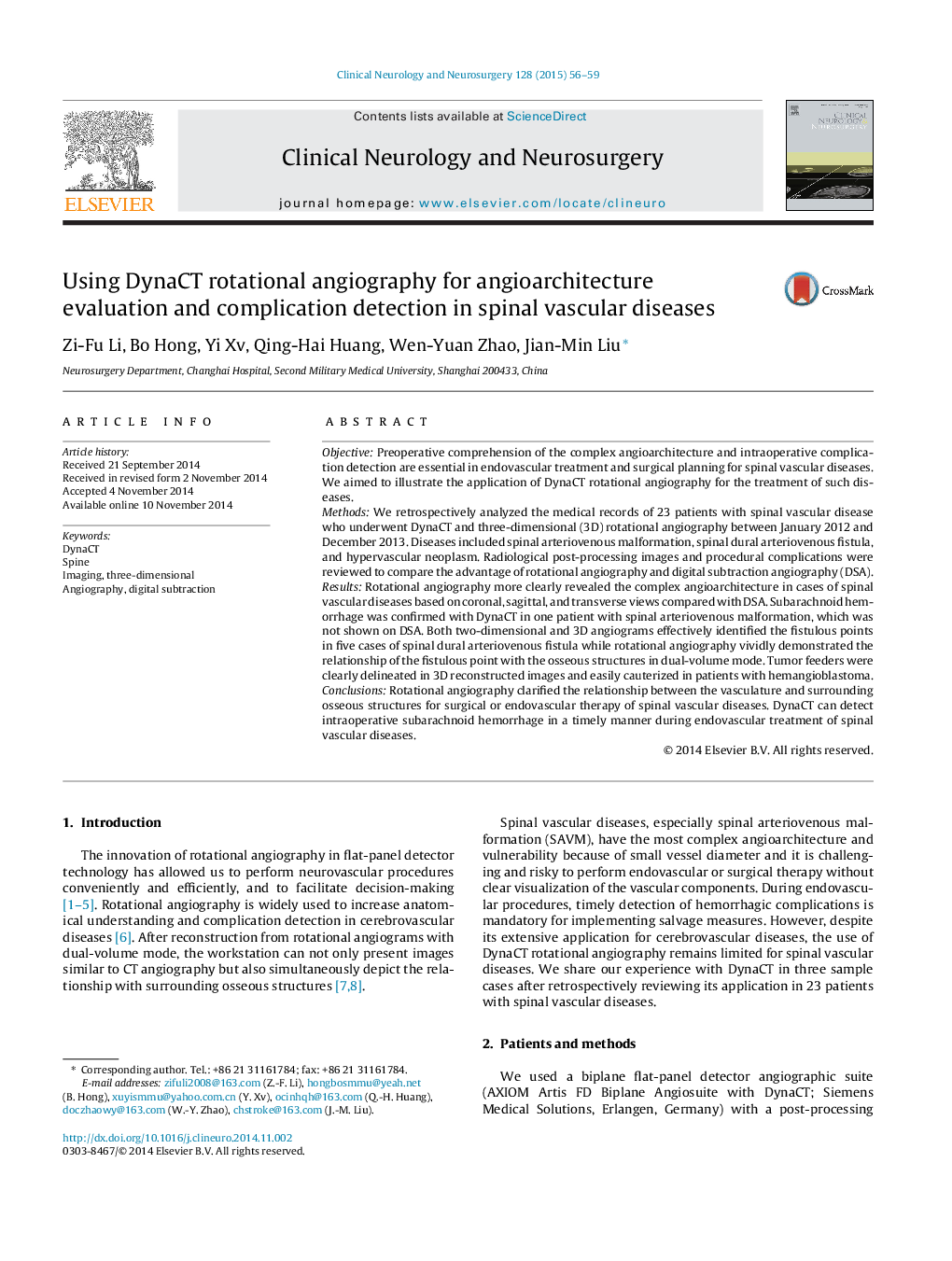| کد مقاله | کد نشریه | سال انتشار | مقاله انگلیسی | نسخه تمام متن |
|---|---|---|---|---|
| 3040133 | 1579694 | 2015 | 4 صفحه PDF | دانلود رایگان |

• We use rotational angiography to understand the spinal disease angioarchitecture.
• We use DynaCT to detect intraoperative hemorrhagic complications in spinal diseases.
• We use rotational angiography for preoperative planning and intraoperative guidance.
ObjectivePreoperative comprehension of the complex angioarchitecture and intraoperative complication detection are essential in endovascular treatment and surgical planning for spinal vascular diseases. We aimed to illustrate the application of DynaCT rotational angiography for the treatment of such diseases.MethodsWe retrospectively analyzed the medical records of 23 patients with spinal vascular disease who underwent DynaCT and three-dimensional (3D) rotational angiography between January 2012 and December 2013. Diseases included spinal arteriovenous malformation, spinal dural arteriovenous fistula, and hypervascular neoplasm. Radiological post-processing images and procedural complications were reviewed to compare the advantage of rotational angiography and digital subtraction angiography (DSA).ResultsRotational angiography more clearly revealed the complex angioarchitecture in cases of spinal vascular diseases based on coronal, sagittal, and transverse views compared with DSA. Subarachnoid hemorrhage was confirmed with DynaCT in one patient with spinal arteriovenous malformation, which was not shown on DSA. Both two-dimensional and 3D angiograms effectively identified the fistulous points in five cases of spinal dural arteriovenous fistula while rotational angiography vividly demonstrated the relationship of the fistulous point with the osseous structures in dual-volume mode. Tumor feeders were clearly delineated in 3D reconstructed images and easily cauterized in patients with hemangioblastoma.ConclusionsRotational angiography clarified the relationship between the vasculature and surrounding osseous structures for surgical or endovascular therapy of spinal vascular diseases. DynaCT can detect intraoperative subarachnoid hemorrhage in a timely manner during endovascular treatment of spinal vascular diseases.
Journal: Clinical Neurology and Neurosurgery - Volume 128, January 2015, Pages 56–59